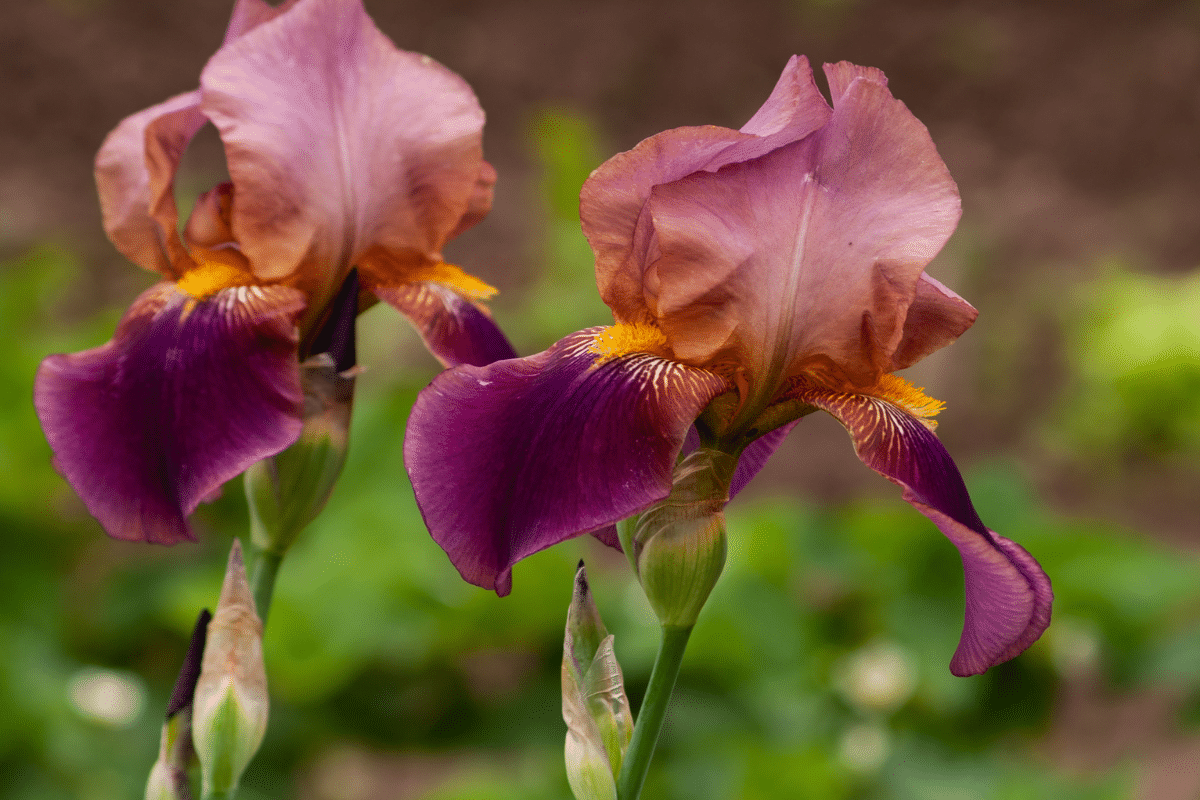Add beautiful flowers to your garden!
Irises are among the easiest of perennials to grow from bulbs, roots or rhizomes. The genus includes some 250-300 species featuring showy flowers. In fact, the iris takes its name from the Greek word for a rainbow, which is also the name for the Greek goddess of the rainbow, Iris. A perfect name for flowers that bloom in a rainbow of colors!
Each iris flower has two types of petals, the “standard” petal stands upright and includes the three top petals. The lower three petals, the “falls”, curve downwards.
The three main types of iris are bearded, beardless and dutch. Each with distinct features to complement your garden.
To learn more about different types of iris to celebrate the Year of the Iris with, please read our blog: Bearded, Beardless or Dutch, there’s an Iris for you!
Bearded Iris
Bearded Irises are identified by thick, bushy “beards” on each of the falls (lower petals) of the blossoms. These hair-like beards are fuzzy and stand up from the petals.

Bearded irises are grown from a thick fleshy root called a “rhizome”. The rhizome feels like a tough potato in texture. These rhizomes should be planted in the ground during the fall months to give the roots time to become established before winter. When you buy a new iris, you will probably receive a rhizome with clipped roots and leaves. It can remain out of the ground for a week or two without serious harm, but the sooner it is planted, the better.
Plant your bearded iris in a sunny (6-8 hours) location with well-drained soil planted with the top of the rhizomes at the soil or up to an inch below the surface of the ground. Read Three Myths About Bearded Irises for more information on planting.
Bearded irises do best with a low-nitrogen fertilizer, apply once in early spring and once after blooming.
In about 2 or 3 years, a decrease in blooms usually indicates that it is time to divide your plants. Be sure to divide the plant by cutting the newer parts of the rhizome free from the old section and discard the older part.
The American Iris Society has divided the bearded irises into six groups.
- Miniature Dwarf Bearded
- Standard Dwarf
- Intermediate Bearded
- Border Bearded
- Miniature Tall Bearded
- Tall Bearded
Each one of these classifications have a different flowering time, height and habitat. Find more information on these different classifications here
Some bearded irises are “rebloomers”, blooming once more in the same growing season in the summer or fall. The number of blooms you will get later in the season varies by variety and local conditions. There are now reliable attractive rebloomers available in the marketplace which will perform in all but the coldest climates. Reblooming Iris will be identified in their label description.
Beardless Irises
Often used for naturalizing a garden or perennial border, beardless irises are an easy and beautiful addition whether in bloom or not.

When you receive your beardless rhizome, it will be wrapped in damp paper and placed in a plastic bag. Immediately remove the rhizomes and soak the roots in water overnight. These roots do not like to dry out so plant immediately in the fall, about four weeks before the first hard freeze. Beardless rhizomes like to be planted 1″ below the soil (2″ below for the Japanese Iris).
Though beardless irises are often called “water irises”, most varieties do great in the garden. They enjoy a full to partial sun location and a balanced fertilizer in the spring when the plants are a few inches high. Japanese Irises are especially heavy feeders and appreciate a second feeding of fertilizer before bloom time. During dry periods, mulch the roots to help retain moisture.
Beardless irises can grow for several years in the same location. Japanese irises are the exception – they like to be divided every three years.
There are six different types of Beardless Iris.The first four types are commonly grown in gardens, and they all bloom late spring and early summer. The fifth type, the Pacific Coast Native, is native to the western regions of the United States. The sixth is the species type and is often called the “wild iris”. Learn more about the types here.
- Spurias
- Siberians
- Japanese
- Louisianas
- Pacific Coast Natives or Californicae
- Species
Dutch Irises

Easy to grow Dutch Irises are grown from a bulb (not a rhizome). The bulbs can be planted in both fall and spring. Plant the bulbs about 5″ deep with the pointy tip-up.
These Iris are a popular flower used by florists in seasonal flower designs. They flower in late spring to early summer and can be grown in sun or partial shade. The bulbs are hardy from Zone 3 – 9.
Dutch Irises look best when planted in groups. For a stunning show, plant about a dozen bulbs per square foot.
Find these and many more annuals, perennials, flowering shrubs, edibles and more at Burger Farm and Garden


